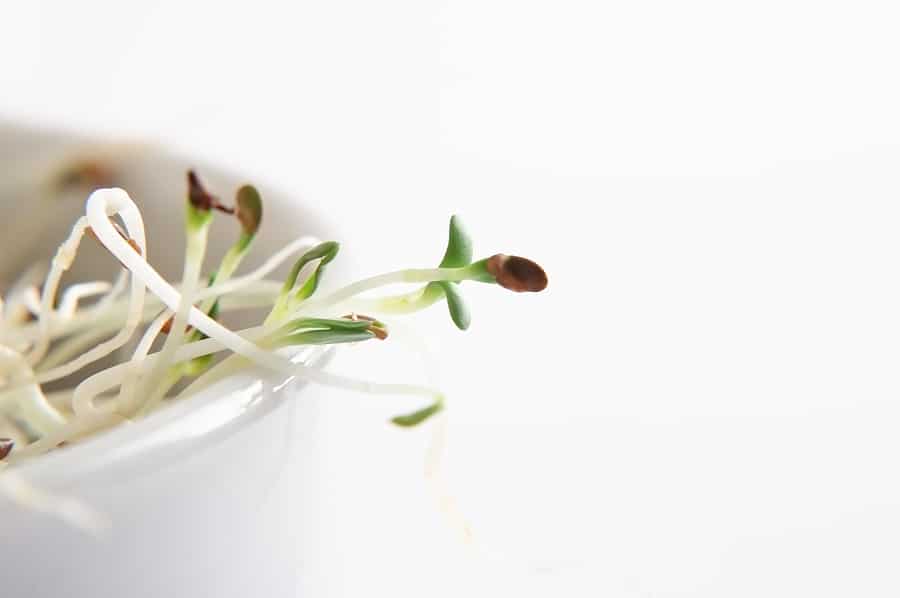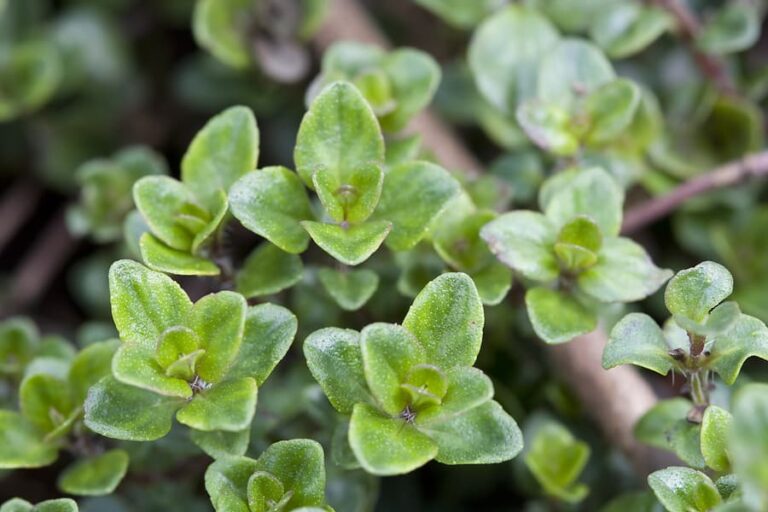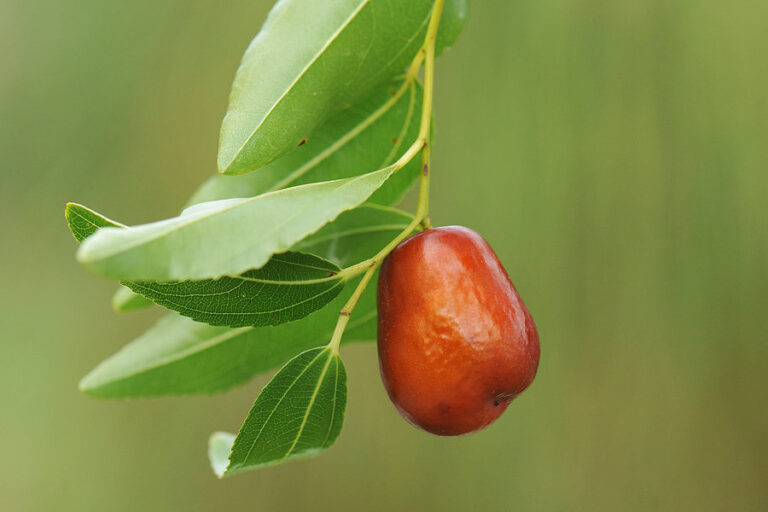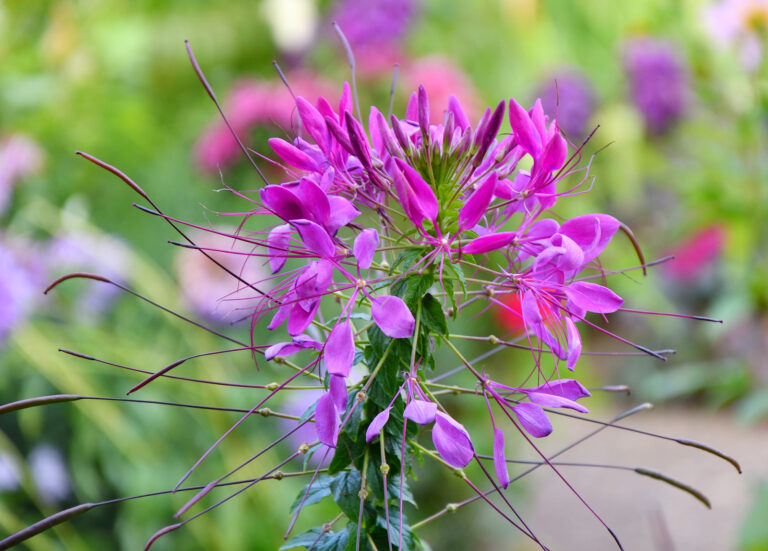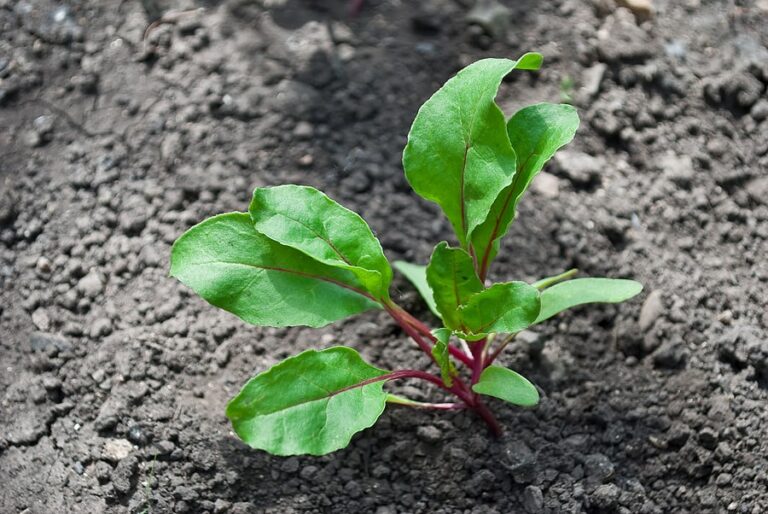Seed Sprouts for Eating
Sprouts are the young shoots from the germinated seeds of vegetables, beans, and grains. Many seeds can be sprouted for eating. Mung beans and alfalfa are the most common seeds for sprouts.
Other common seeds for sprouts include adzuki, cabbage, chives, red clover, fenugreek, garbanzo, lentil, mustard, peas, radish, and black sunflower. See the list below for more.
Some sprouts are eaten fresh and raw, others including all grain and starchy bean sprouts should be cooked before eating. Sprouts are a source of vitamins B and C, iron, fiber, folic acid, and phytonutrients.
Sprouting seeds requires no special equipment. You can buy a seed sprouter but you can also sprout seeds in a bamboo basket or a colander covered with a plastic bag or a wide-mouthed quart jar covered with cheesecloth or linen and secured with a rubber band. For a quart-sized jar, you will need about 1½ tablespoon seeds.
Seeds sold for eating in a grocery store or health food store can be used for sprouting. Seeds that you have collected from some edible plants can be used for sprouting; be sure the seeds you want to sprout are edible, and not toxic–see the list below for edible sprouts. The best practice is to use sanitized, uncontaminated seeds to avoid potential bacterial contamination. Do not use seeds sold for planting; those seeds may have been treated with chemicals.
Steps for Sprouting Seeds. Good drainage and aeration are important for seed sprouting. It is important to keep in mind that the temperature and humidity needed to sprout seeds can also lead to the growth of pathogens–so always work with sterile seed sprouters or jars.
Steps for sprouting seeds:
- Fill a jar part way with warm water–enough to swish and clean the seeds (use about 1½ tablespoons seeds for a quart jar); clean the seed and then pour away the water.
- Fill the jar with 3 times the water needed to cover the seeds and then let the seeds soak water overnight–that is 8 to 12 hours.
- Drain away the water and remove any chaff from the seeds.
- Wash the sprouting jar, colander, or basket with boiling water–sterilize the sprouter.
- Spread the soaked seeds evenly in a single layer in the sprouting jar, colander, or basket–don’t try to sprout too many seeds at once. Let the seeds sit for 3 to 4 hours.
- Place the jar in a cool spot indoors with plenty of air circulation and away from direct light. The ideal sprouting temperature is about 70 degrees F.
- Re-rinse the seeds with cool water and drain twice a day. Keep the seeds damp but not wet. Be sure to spread the seed out after each rinsing. Drainage is important to avoid mold and rot.
- The seeds are ready for “harvest” when the hulls or seed covers drop or float away during rinsing; harvest usually comes in about three days. Grain sprouts will be about the length of the grain itself. Mung bean sprouts will be about 2 inches long other bean sprouts will be up to 1 inch long.
- Rinse the seed a final time in fresh water to remove any remaining seeds hulls. (Some seed covers can be eaten with the sprouts, but others such as sunflowers will be too tough–so remove them before eating.)
- Take the sprouts from the sprouting container and place them in indirect sunlight to that they will begin to green with chlorophyll and carotene
- Sprouts are ready to eat or refrigerate. Store sprouts in a clean, perforated container that allows for air circulation or loosely pack in a plastic bag. Sprouts will keep for about 3 to 7 days in the refrigerator.
Seeds for Sprouting:
Here are some seeds commonly sprouted for eating:
• Adzuki (Vigna angularis): sprouts 3-5 days; the bean and root are mild flavored.
• Alfalfa (Medicago sativa): sprouts 5-7 days; the leaves are mild flavored.
• Buckwheat (Fagopyrum esculentum): sprouts 1-2 days; leaves are mild flavored.
• Cabbage (Brasscia oleracea, Capitata group): sprouts in 3-5 days; cabbage flavor.
• Chives (Allium schoenoprasum): sprouts 10-14 days; shoots and roots are onion flavor.
• Clover (Trifolim pratense, T. incarntum): sprouts in 4-6 days; tangy flavor.
• Cress (Lepidium sativum): sprouts 3-4 days; leaves have tangy flavor.
• Fenugreek (Trigonella foenum-graecum): sprouts 6-8 days; leaves are bitter flavored.
• Garbanzo (Cicer arietinum): sprouts 2-4 days; bean and root are hardy eating.
• Kale (Brassica oleracea, Acephala group): sprouts 2-5 days; leaves have strong flavor.
• Lentil (Lens culinaris): sprouts3-5 days; bean and root are hardy eating.
• Mung (Vigna radiata): sprouts 3-5 days; bean and root are mild flavored.
• Mustard (Brassica nigra): sprouts 3-5 days; leaves are peppery flavored.
• Peas (Pisum sativum): sprouts 5-7 days; bean and roots are mild flavored.
• Radish (Raphanus sativus): sprouts 3-5 days; leaves are peppery flavored.
• Rye (Secale cereale): sprouts 2-3 days; leaves are nutty flavored.
• Soybean (Glycine max): sprouts 3-5 days; bean and root are hardy eating.
• Black Sunflower (Helianthus annus): sprouts 6-10 days; leaves are mild flavored.
• Turnip (Brassica rapa, Rapifera group): sprouts 2-5 days; strong flavored.
• Wheat (Triticum spp.): sprouts 2-3 days; corn-grain flavored.

